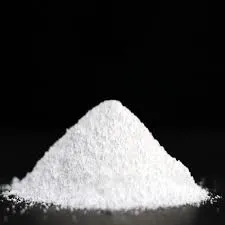Ammonium Thiocyanate Properties, Applications, and Safety Considerations
Ammonium thiocyanate (NH4SCN) is an inorganic compound that plays a vital role in various industrial applications and scientific research. It is a white crystalline solid that is highly soluble in water, making it an important reagent in both laboratory and industrial settings. This article will explore the properties, applications, and safety considerations concerning ammonium thiocyanate.
Chemical Properties
Ammonium thiocyanate is composed of ammonium ions (NH4+) and thiocyanate ions (SCN-). It has a molar mass of 76.12 g/mol and a melting point of around 149 °C. The compound is hygroscopic, meaning it readily absorbs moisture from the air, which is a critical factor to consider when storing and handling it. When dissolved in water, ammonium thiocyanate dissociates into its constituent ions, making it useful in various aqueous applications.
One of the most notable physical properties of ammonium thiocyanate is its endothermic solubility. It absorbs heat from the surroundings when dissolving, resulting in a significant temperature drop in the solution. This property has led to its use in endothermic cooling packs, where it provides a quick and efficient cooling effect.
Applications
Ammonium thiocyanate has a wide range of applications across several sectors. In the agricultural industry, it is used as a nitrogen source in fertilizers. Its high solubility facilitates rapid availability to plants, enhancing their growth and yield.
In the chemical industry, ammonium thiocyanate serves as a precursor in the synthesis of thiocyanate salts and other thiocyanate compounds. These compounds are explored in various chemical reactions, including those related to organic synthesis. Additionally, its role as a reagent in analytical chemistry is substantial; it is often used in the detection of heavy metal ions and other analytical processes.
ammonium thiocyanate

Another significant application of ammonium thiocyanate is in the field of photography
. Early photographic processes utilized ammonium thiocyanate as a component in developing solutions, contributing to the black-and-white photographic process.Moreover, ammonium thiocyanate is utilized in the production of various pharmaceutical compounds. Its unique chemical properties make it valuable in the synthesis of certain medications and other therapeutic substances.
Safety Considerations
While ammonium thiocyanate has numerous beneficial applications, it is vital to consider its safety and handling. It can be harmful if ingested or inhaled, causing irritation to the respiratory tract and gastrointestinal system. Proper safety measures, including wearing gloves and protective eyewear, are essential when handling this compound.
Environmental safety is another critical aspect. Disposal of ammonium thiocyanate must be conducted following local regulations as it can pose risks to aquatic life if released into water systems. Proper waste management practices should always be adhered to in any operational setting where this compound is utilized.
Conclusion
Ammonium thiocyanate is a versatile compound with essential applications in agriculture, chemistry, photography, and pharmaceuticals. Its unique properties, including its endothermic dissolution, make it particularly valuable in specific uses. However, awareness of its safety and environmental impact is crucial for ensuring the responsible handling and application of this compound. As industries continue to evolve, the role of ammonium thiocyanate remains significant, contributing to advancements in various scientific and industrial fields. Its importance underscores the need for thorough understanding and adherence to safety protocols in all dealings with this compound.

